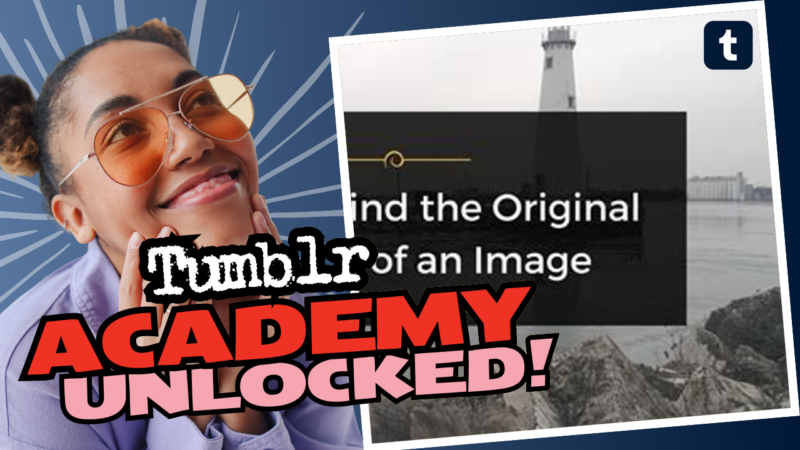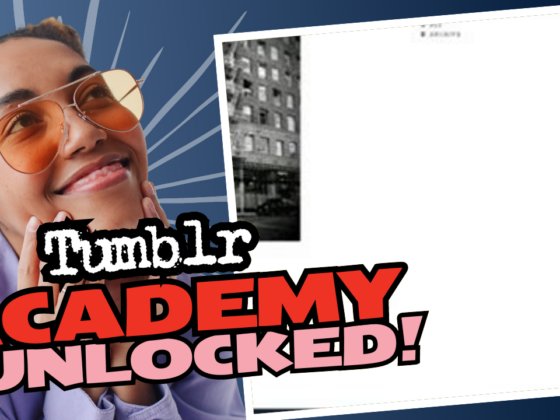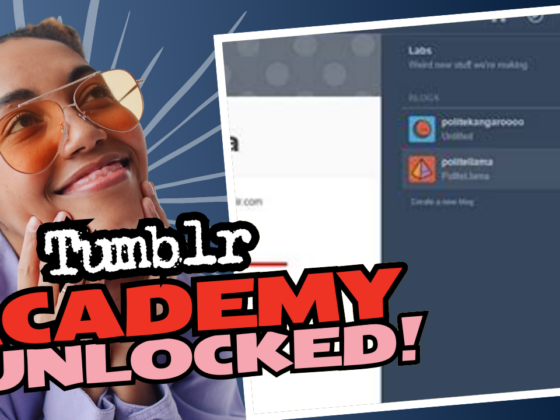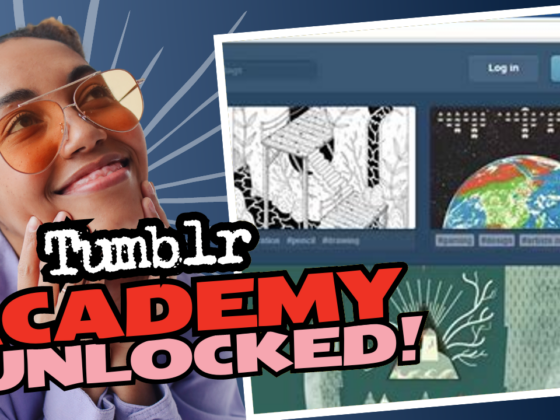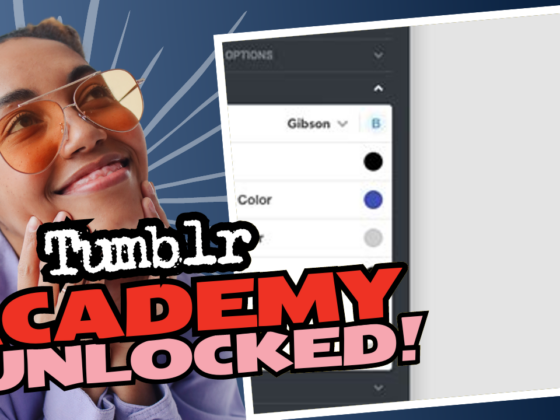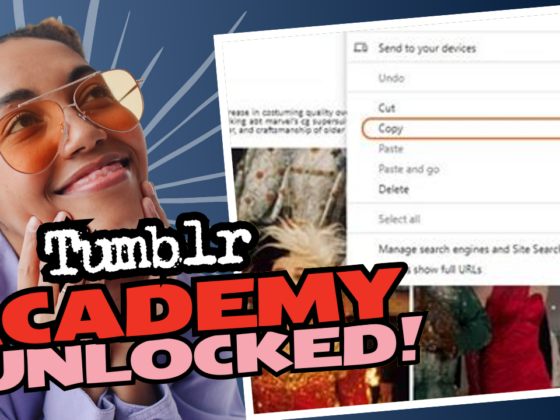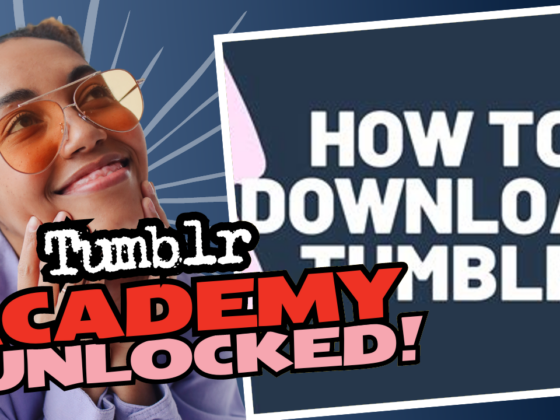How to Unravel the Mystery Behind an Image on Tumblr
Ah, the mystical world of Tumblr. A place where memes are born, art thrives, and pictures go viral faster than you can say “Tumblr famous.” But what happens when you stumble upon a captivating image that sparks your curiosity—*perhaps a cat dressed as a taco or an aesthetically pleasing sunset*—and you want to delve deeper into its origins? Finding the source of an image on Tumblr can seem daunting, but fear not! I’m here to guide you on your quest. Let’s break it down step by step, using a fantastical mix of technology and a bit of detective work that would make Sherlock Holmes proud.
Step 1: Download and Save That Image
First things first, you need to save that stunning image to your device. Right-click on the image and select “Save Image As…”. Or if you’re feeling a bit more heroic, you can try a screenshot. I won’t judge your quirky methods!
Now that you’ve got this visual gem saved on your device, let’s bring out the big guns—image search engines. Think of them as the best friends you’ve always needed in your digital adventure. But wait, which ones should you use?
Step 2: Let the Image Search Engines Do Their Work
Here’s the fun part! You can utilize several online tools to find the source of your image. Bookmark these, because they will become your new best friends:
- Google Image Search: Just go to Google Images and click the camera icon in the search bar. Upload your image, and let Google work its magic. You’ll be amazed at how intuitive it can be.
- Tineye: This is specifically designed for reverse image searches, and it’s super efficient! Upload the image or paste its URL, and Tineye will find the original sources.
- Bing Image Search: Yes, Bing! Don’t knock the little guy; it can yield surprising results. Upload your image and see what it digs up!
- Yandex: The Russian giant! Yandex has great searching power and often finds things others can’t, especially if the image is older.
- Baidu: Another player from Russia, this search engine is particularly effective for finding Chinese-origin content. If you suspect this image is Chinese, give Baidu a whirl!
- SauceNao: It’s a bit of a meme, but this tool is fantastic for finding anime or fan art sources. It’s your go-to if you’ve stumbled across anime styles!
- IQDB: Another great anime and fan art reverse image search site. IQDB is especially useful if you’re delving into the artistic depths of fandoms.
Step 3: Dive into NooBox for Enhanced Results
Feeling like a tech whiz? Consider installing a nifty little extension I crafted called NooBox. This browser extension allows you to reverse search any image found online or sitting on your desktop. Talk about unleashing your inner detective! With one click, you can search that elusive image all over the net, including Tumblr.
Step 4: Follow the Breadcrumbs on Tumblr
If, in your image search travels, you land back on Tumblr, it may lead you to the blog of someone who reblogged the higher quality set of images. Here’s a pro-tip: scour through the reblogs and likes to see if anybody has given credit to the original artist or source. Sometimes they’ll mention the original poster right under their post!
Step 5: Retrace Your Steps—The Notes Factor
If all else fails and the image seems to be cloaked in secrecy, it’s time to dig deeper. Check the number of notes (heart and reblog counts) on the Tumblr post. If it’s low, you might have a chance of finding the original poster through a manual search:
- Start from the reblog chain; click on each blog till you find a clue.
- Keep an eye out for tags that might lead you to the original post. Tags can sometimes be the golden key you need!
- Look for URLs in the post or notes section that may link you back to the source.
Why It Might All Go Wrong
Sometimes, despite your best efforts, you might come across a *dead end*. Here are some reasons why:
- No attribution: Not everyone gives credit where it’s due. It’s annoying, but it happens.
- Deleted posts: If the original poster removed their content, that’s like being ghosted in the digital realm.
- Watermarks: Having a prominent watermark is a blessing and a curse—it helps identify a source but can also lead to misattribution if someone else uses the image.
Embrace Patience and Perseverance!
In the wild world of Tumblr, patience is key. Sometimes the image source might be hidden in layers of reblogs or completely unreachable. If you find it, celebrate that little victory. If you don’t, at least you’ll have sharpened your sleuthing skills, because let’s be real—anything you learn adds to the master toolkit of Internet wizardry. 🔍✨
The Bigger Picture—Why Finding Image Sources Can Matter
Understanding the source of an image can often lead you to great artists, inspiring blogs, or even the original context behind a meme or graphic. If you appreciate the work, consider reaching out and offering a bit of recognition. You might just make someone’s day! It’s all about supporting the creative community out there.
Finally, the next time you encounter a captivating image on Tumblr, summon your inner detective and embark on a digital adventure. Gather your tools, save that image, and use the powers of reverse search engines and community tags. And hey, even when you fail, just remember it’s all about the thrill of the chase, right?
Conclusion: Be a Brave Internet Explorer
So there you have it! Your comprehensive guide to uncovering the source of images on Tumblr. The next time you see something that piques your interest, won’t you give these tips a try? You’ll feel like a digital Indiana Jones as you hunt for those elusive source links. Happy exploring, image detectives! 🕵️♀️

